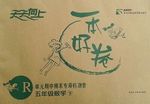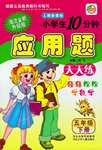
Most book reviews start with a heading that includes all the basic information about the book, like:
Title.
Author.
Place of publication; publisher, date of publication.
Number of pages.
Like most pieces of writing, the review usually begins with an introduction that lets your readers know what the review will say. The first paragraph usually includes the author and title again, so your readers don’t have to look up to find this information. You should also include a very brief description of the contents of the book, the purpose or audience for the book, and your reaction and evaluation.
Then you move into a section of background information that helps place the book in context and discusses criteria for judging the book. Next, the review gives a summary of the main points of the book, quoting(引用) and explaining key phrases from the author. Finally, you get to the heart of your review – your evaluation of the book. In this section, you might discuss some of the following issues:
how well the book has achieved its goal
what possibilities are suggested by the book
what the book has left out
how the book compares with others on the subject
what specific points are not convincing
what personal experiences you’ve had related to the subject.
It is important to use labels to carefully distinguish your views from the author’s, so that you don’t confuse your reader.
Then, like other essays, you can end with a direct comment on the book, and tie together issues raised in the review in a conclusion.
There is, of course, no set form, but a general rule is that the first one – half to two – thirds of the review should summarize the author’s main ideas and at least one – third should evaluate the book.
1.What is the most important part of a book review?
A.The heading. B.The evaluation.
C.The conclusion. D.The introduction.
2.It can be confusing to readers if .
A.there is no heading in a book review
B.the book has achieved its goal
C.the viewer’s point of view is not distinguished from the author’s
D.the book is compared with others on the same subject
3.What is NOT suggested for a book review in this passage?
A.Quoting from the author of the book.
B.Providing some book information.
C.Analyzing only the author of the book.
D.Comparing the book with others of a similar subject.
4.The best title for this passage is “ ”.
A.Steps to follow
B.Tips for writing a book review
C.The way to develop your idea
D.Things not to be avoided in a book review
 天天向上一本好卷系列答案
天天向上一本好卷系列答案 小學生10分鐘應用題系列答案
小學生10分鐘應用題系列答案科目:高中英語 來源:廣東省深圳高級中學2011-2012學年高一上學期期中測試英語試題 題型:016
This is the first time he ________ the most book.
read
reads
had read
has read
查看答案和解析>>
科目:高中英語 來源:2013-2014學年高考二輪復習考前沖刺(五)英語試卷(解析版) 題型:閱讀理解
A book review tells not only what a book is about,but also how successful it is at what it is trying to do.Professors often assign book reviews as practice in careful analytical(分析的) reading.
As a reviewer,you bring together the two strands of accurate,analytical reading and strong,personal response when you indicate(指出) what the book is about and what it might mean to a reader(by explaining what it meant to you).In other words,reviewers answer not only the WHAT but the SO WHAT question about a book.Thus,in writing a review,you combine the skills of describing what is on the page,analyzing how the book tried to achieve its purpose,and expressing your own reactions.
Most book reviews start with a heading that includes all the basic information about the book,like:
Title.
Author.
Place of publication,publisher,date of publication.
Number of pages.
Like most pieces of writing,the review usually begins with an introduction that lets your readers know what the review will say.The first paragraph usually includes the author and title again,so your readers don’t have to look up to find this information.You should also include a very brief description of the contents of the book,the purpose or audience for the book,and your reaction and evaluation.
Then you move into a section of background information that helps place the book in context and discusses how to judge the book.Next,you should give a summary of the main points,quoting(引用) and explaining key phrases from the author.Finally,you get to the heart of your review—your evaluation of the book.In this section,you might discuss some of the following issues:
?How well the book has achieved its goal.
?What possibilities are suggested by the book.
?What the book has left out.
?How the book compares with others on the subject.
?What specific points are not convincing.
?What personal experiences you’ve had related to the subject.
It is important to use labels to carefully distinguish your views from the author’s,so that you don’t confuse your readers.
Then,like other essays,you can end with a direct comment on the book,and tie together issues raised in the review in a conclusion.
There is,of course,no set form,but a general rule is that the first one?half to two?thirds of the review should summarize the author’s main ideas and at least one?third should evaluate the book.
1.According to the text,personal response of a book reviewer refers to “________”.
A.accurate and analytical reading
B.the reviewer’s indication of what the book is
C.the reviewer’s indication of what the book meant to a reader
D.skills of describing what is on the page
2.What is the most important part of a book review?
A.The heading.? B.The evaluation.
C.The conclusion.? D.The introduction.
3.Readers will get puzzled if ________.
A.there is no heading in a book review
B.the book review is not complex enough
C.the reviewer’s point of view is mixed with the author’s
D.there are some different issues listed in the book review
4.What does the text mainly tell us?
A.Steps to read a book.
B.Tips for writing a book review.
C.The way to develop your idea.
D.Things not to be avoided in a book review.
查看答案和解析>>
科目:高中英語 來源:江蘇省南京市2010屆高三下學期第三次模擬考試試卷(英語) 題型:閱讀理解
.
第三部分:閱讀理解(共15小題,每題2分,滿分30分)
閱讀下列短文,從每題所給的四個選項(A、B、C和D)中,選出最佳選項,并在答題卡上將該項涂黑。
Most book reviews start with a heading that includes all the basic information about the book, like:
Title.
Author.
Place of publication; publisher, date of publication.
Number of pages.
Like most pieces of writing, the review usually begins with an introduction that lets your readers know what the review will say. The first paragraph usually includes the author and title again, so your readers don’t have to look up to find this information. You should also include a very brief description of the contents of the book, the purpose or audience for the book, and your reaction and evaluation.
Then you move into a section of background information that helps place the book in context and discusses criteria for judging the book. Next, the review gives a summary of the main points of the book, quoting(引用) and explaining key phrases from the author. Finally, you get to the heart of your review – your evaluation of the book. In this section, you might discuss some of the following issues:
how well the book has achieved its goal
what possibilities are suggested by the book
what the book has left out
how the book compares with others on the subject
what specific points are not convincing
what personal experiences you’ve had related to the subject.
It is important to use labels to carefully distinguish your views from the author’s, so that you don’t confuse your reader.
Then, like other essays, you can end with a direct comment on the book, and tie together issues raised in the review in a conclusion.
There is, of course, no set form, but a general rule is that the first one – half to two – thirds of the review should summarize the author’s main ideas and at least one – third should evaluate the book.
56.What is the most important part of a book review?
A.The heading. B.The evaluation.
C.The conclusion. D.The introduction.
57.It can be confusing to readers if __________.
A.there is no heading in a book review
B.the book has achieved its goal
C.the viewer’s point of view is not distinguished from the author’s
D.the book is compared with others on the same subject
58.What is NOT suggested for a book review in this passage?
A.Quoting from the author of the book.
B.Providing some book information.
C.Analyzing only the author of the book.
D.Comparing the book with others of a similar subject.
59.The best title for this passage is “__________”.
A.Steps to follow
B.Tips for writing a book review
C.The way to develop your idea
D.Things not to be avoided in a book review
查看答案和解析>>
科目:高中英語 來源: 題型:閱讀理解
.
第三部分:閱讀理解(共15小題,每題2分,滿分30分)
閱讀下列短文,從每題所給的四個選項(A、B、C和D)中,選出最佳選項,并在答題卡上將該項涂黑。
Most book reviews start with a heading that includes all the basic information about the book, like:
Title.
Author.
Place of publication; publisher, date of publication.
Number of pages.
Like most pieces of writing, the review usually begins with an introduction that lets your readers know what the review will say. The first paragraph usually includes the author and title again, so your readers don’t have to look up to find this information. You should also include a very brief description of the contents of the book, the purpose or audience for the book, and your reaction and evaluation.
Then you move into a section of background information that helps place the book in context and discusses criteria for judging the book. Next, the review gives a summary of the main points of the book, quoting(引用) and explaining key phrases from the author. Finally, you get to the heart of your review – your evaluation of the book. In this section, you might discuss some of the following issues:
how well the book has achieved its goal
what possibilities are suggested by the book
what the book has left out
how the book compares with others on the subject
what specific points are not convincing
what personal experiences you’ve had related to the subject.
It is important to use labels to carefully distinguish your views from the author’s, so that you don’t confuse your reader.
Then, like other essays, you can end with a direct comment on the book, and tie together issues raised in the review in a conclusion.
There is, of course, no set form, but a general rule is that the first one – half to two – thirds of the review should summarize the author’s main ideas and at least one – third should evaluate the book.
56.What is the most important part of a book review?
A.The heading. B.The evaluation.
C.The conclusion. D.The introduction.
57.It can be confusing to readers if __________.
A.there is no heading in a book review
B.the book has achieved its goal
C.the viewer’s point of view is not distinguished from the author’s
D.the book is compared with others on the same subject
58.What is NOT suggested for a book review in this passage?
A.Quoting from the author of the book.
B.Providing some book information.
C.Analyzing only the author of the book.
D.Comparing the book with others of a similar subject.
59.The best title for this passage is “__________”.
A.Steps to follow
B.Tips for writing a book review
C.The way to develop your idea
D.Things not to be avoided in a book review
查看答案和解析>>
湖北省互聯網違法和不良信息舉報平臺 | 網上有害信息舉報專區 | 電信詐騙舉報專區 | 涉歷史虛無主義有害信息舉報專區 | 涉企侵權舉報專區
違法和不良信息舉報電話:027-86699610 舉報郵箱:58377363@163.com